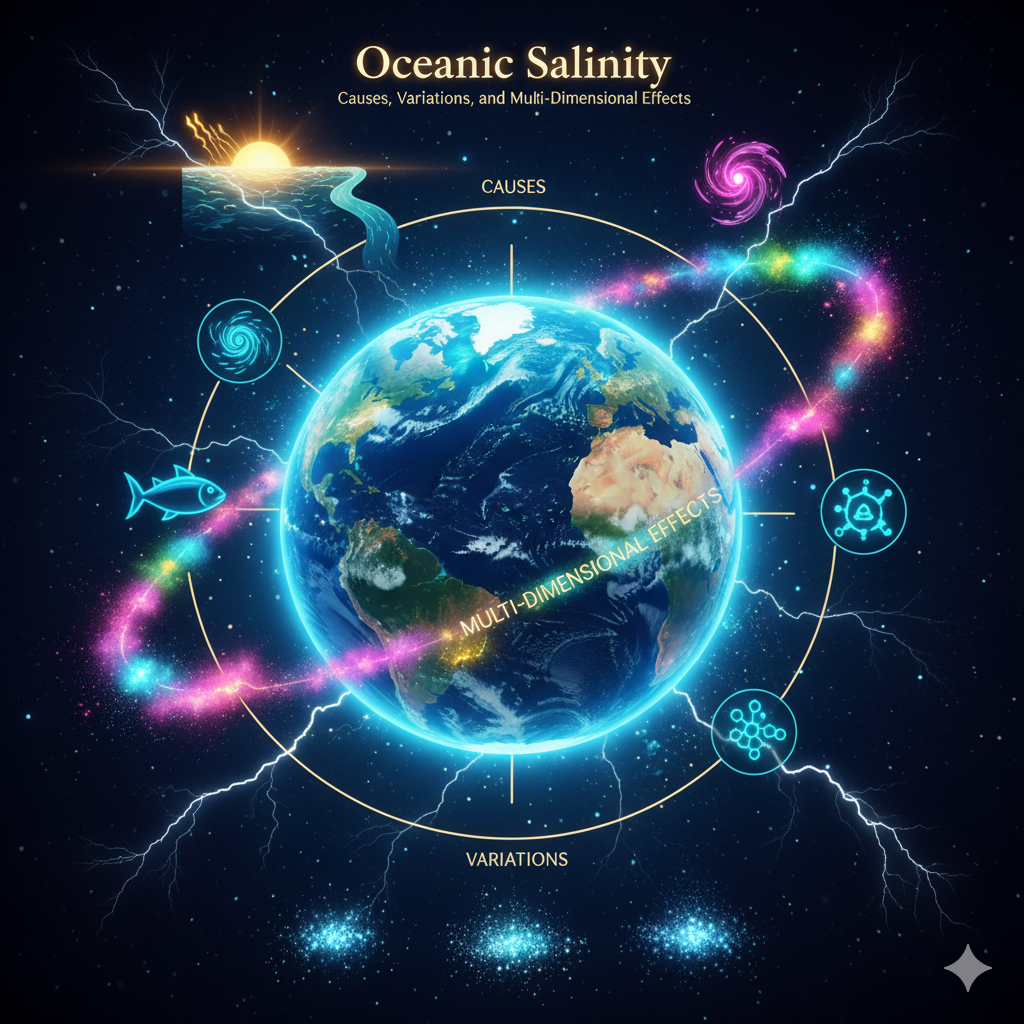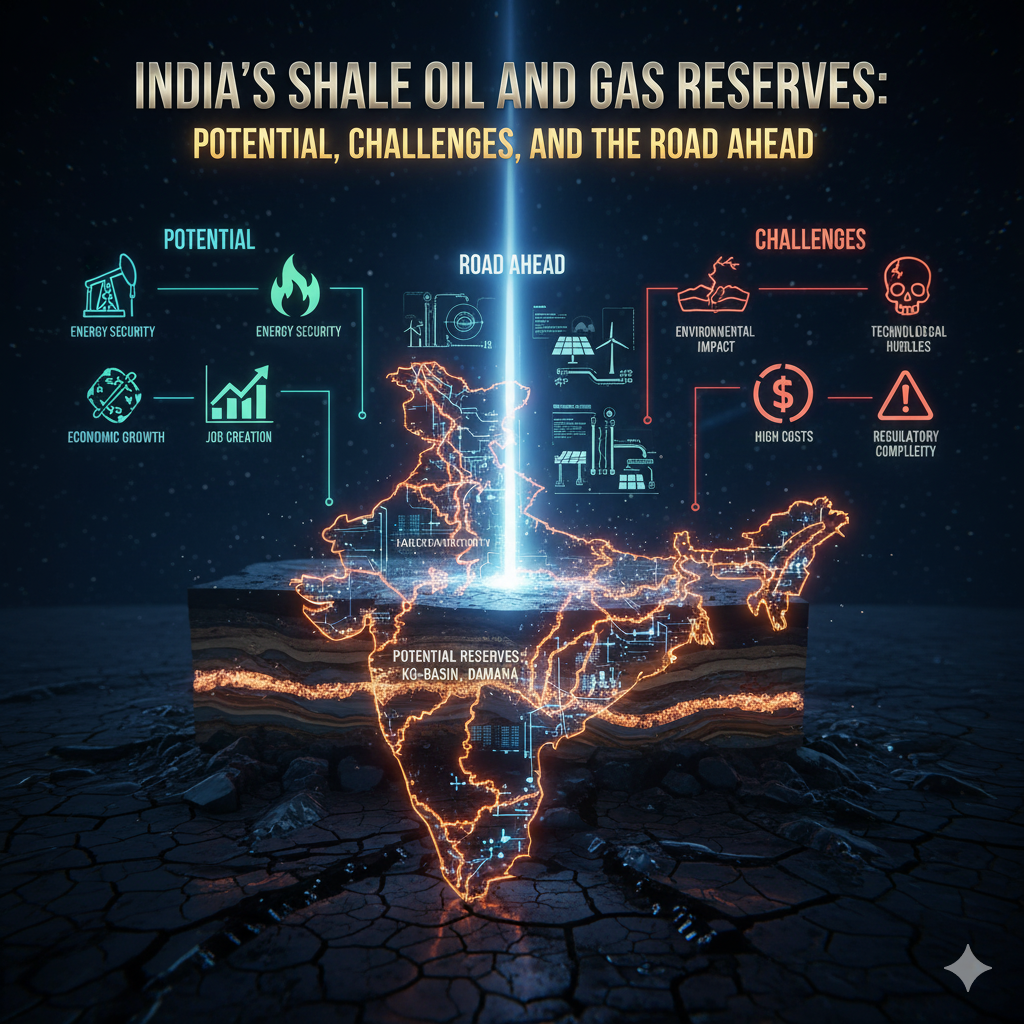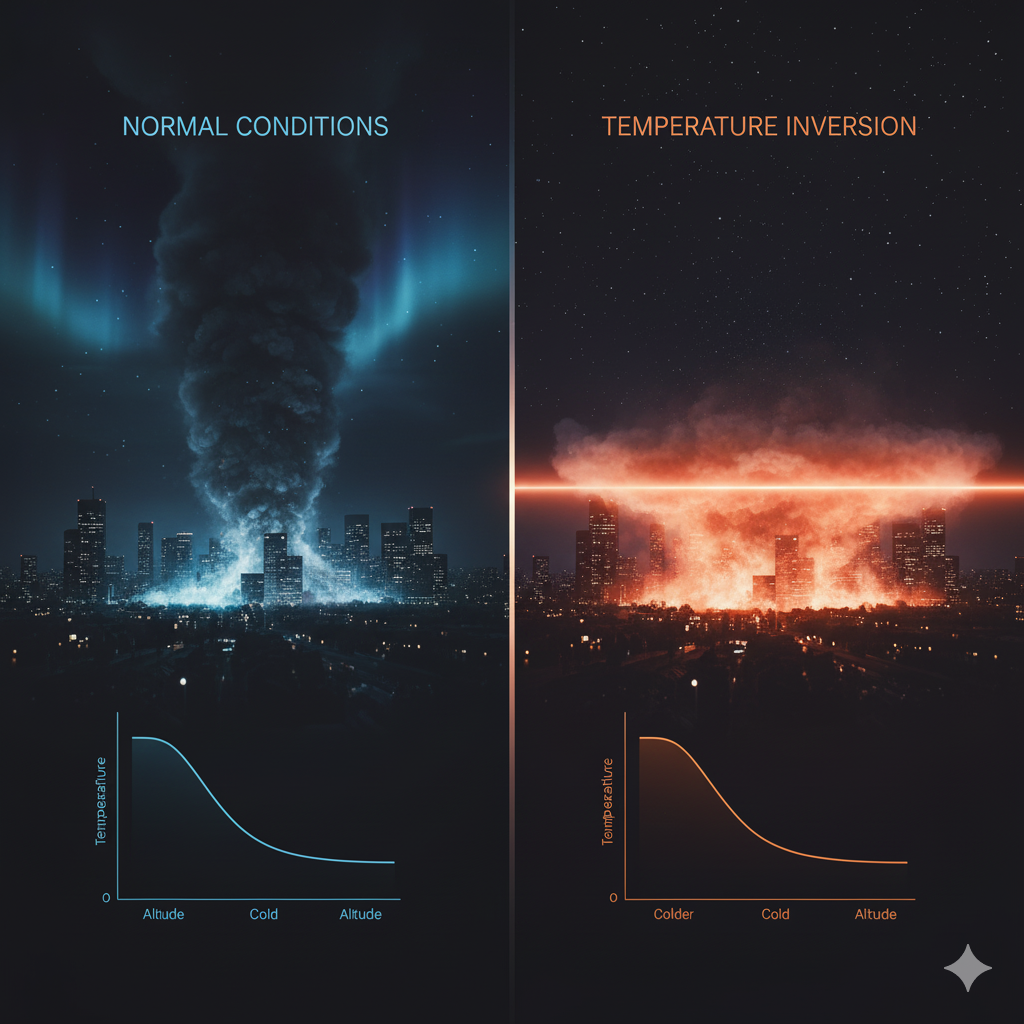Introduction
Oceanic salinity refers to the concentration of dissolved salts, primarily sodium chloride (NaCl), in seawater. Salinity is usually expressed in parts per thousand (ppt) or grams of salt per kilogram of seawater. On average, the world’s oceans have a salinity of about 35 ppt, but this value varies widely depending on geographic location, depth, and climatic conditions.
Salinity is a critical factor in regulating ocean circulation, marine ecosystems, climate patterns, and the global hydrological cycle. Variations in oceanic salinity—whether due to evaporation, precipitation, freshwater inflows, or ice formation—have multi-dimensional impacts on the Earth system. Understanding these variations is essential for marine science, climate studies, fisheries management, and predicting the effects of global warming.
This essay explores the factors that account for salinity variations, the regional and vertical differences in salinity, and the consequences of these variations for climate, ecosystems, and human activities.
1. Factors Controlling Oceanic Salinity
Oceanic salinity is influenced by several physical, chemical, and biological processes:
1.1 Evaporation and Precipitation
- High evaporation rates increase salinity, particularly in subtropical regions.
- Low rainfall and high temperatures in areas like the Red Sea, Persian Gulf, and Mediterranean lead to elevated salinity levels.
- Conversely, heavy precipitation dilutes seawater, lowering salinity, as observed in tropical rain belts.
1.2 River Runoff
- Rivers carry freshwater, sediments, and dissolved minerals to the oceans.
- Large rivers such as the Amazon, Congo, and Ganges significantly reduce salinity near their deltas.
- Seasonal monsoon rains can temporarily lower salinity in coastal areas.
1.3 Ice Formation and Melting
- Sea ice formation increases local salinity by excluding salt (brine rejection), enriching underlying water.
- Melting ice from glaciers or icebergs dilutes seawater, lowering salinity in polar regions.
1.4 Ocean Circulation
- Thermohaline circulation redistributes salinity through the global conveyor belt.
- High-salinity water sinks in the North Atlantic, driving deep-ocean currents that influence global climate.
1.5 Climate Variability
- El Niño and La Niña events affect precipitation patterns and evaporation, altering regional salinity.
- Long-term climate change can increase freshwater inputs from ice melt, reducing salinity in polar and subpolar oceans.
1.6 Geographical and Topographical Factors
- Enclosed or semi-enclosed seas often have higher salinity due to limited water exchange (e.g., the Persian Gulf, Red Sea).
- Coastal upwelling or mixing can moderate salinity near continental shelves.
2. Global Patterns of Salinity
2.1 Surface Salinity
- Surface salinity varies latitudinally:
- High latitudes: Lower salinity due to heavy precipitation, river inflow, and ice melt.
- Subtropics: High salinity due to intense evaporation and low precipitation.
- Equatorial regions: Moderate salinity due to heavy rainfall balancing evaporation.
2.2 Vertical Salinity Profiles
- Surface layer (0–200 m): Highly variable due to atmospheric interactions.
- Intermediate layer (200–1000 m): Salinity stabilizes due to mixing, forming haloclines (rapid salinity change with depth).
- Deep ocean (>1000 m): Salinity is relatively uniform but can vary in regions influenced by brine rejection or freshwater inflows.
2.3 Regional Examples
- Red Sea: ~40 ppt, due to high evaporation.
- Mediterranean Sea: ~38 ppt, high salinity from evaporation and limited inflow.
- Polar Oceans: ~32–34 ppt, low salinity due to ice melt and precipitation.
3. Multi-Dimensional Effects of Salinity Variations
Oceanic salinity variations impact multiple dimensions of the Earth system, including climate, marine ecosystems, ocean circulation, and human activities.
3.1 Effect on Ocean Density and Circulation
- Salinity affects water density, along with temperature.
- High salinity water is denser, sinking to form deep water masses, driving thermohaline circulation.
- This circulation transports heat globally, affecting climate patterns such as the Gulf Stream in the Atlantic.
- Altered salinity can slow or disrupt the global conveyor belt, impacting regional climates and monsoon systems.
3.2 Impact on Climate and Weather
- Ocean salinity influences heat storage and exchange between oceans and the atmosphere.
- Low salinity water can enhance stratification, reducing vertical mixing and limiting heat distribution.
- Salinity anomalies can trigger extreme weather events, including droughts, floods, and tropical cyclones.
- Example: Freshwater influx from Greenland ice melt may reduce North Atlantic salinity, potentially weakening the Atlantic Meridional Overturning Circulation (AMOC).
3.3 Influence on Marine Ecosystems
- Marine species are adapted to specific salinity ranges.
- Salinity changes can alter reproductive cycles, distribution, and migration of fish and plankton.
- Estuarine regions, where salinity varies seasonally, are biodiversity hotspots but highly sensitive to human-induced changes.
3.4 Role in Biogeochemical Cycles
- Salinity influences nutrient availability, oxygen solubility, and carbon cycling.
- Brine rejection during sea ice formation drives deep water oxygenation, supporting global marine life.
- Freshwater input can reduce nutrient mixing, impacting primary productivity in oceans.
3.5 Human and Socio-Economic Implications
- Fisheries: Salinity shifts can affect fish stock distribution, impacting livelihoods.
- Desalination and water supply: Coastal salinity changes influence freshwater availability.
- Climate adaptation: Salinity patterns guide climate modeling, flood management, and coastal planning.
4. Salinity Changes Due to Climate Change
Climate change is intensifying salinity variations:
4.1 Polar Ice Melt
- Greenland and Antarctic ice sheet melt reduces salinity in the North Atlantic and Southern Ocean.
- This freshening threatens thermohaline circulation and could disrupt European climate.
4.2 Increased Precipitation and Runoff
- Global warming increases precipitation in high latitudes and equatorial regions.
- Increased freshwater inflow lowers surface salinity, affecting ocean stratification and mixing.
4.3 Ocean Evaporation
- Warming oceans increase evaporation in subtropics, raising salinity in the Red Sea, Persian Gulf, and subtropical Atlantic.
- This amplifies water stress and ocean heat storage, affecting regional climates.
4.4 Extreme Weather Events
- Hurricanes, cyclones, and floods alter salinity in coastal regions and estuaries.
- These events disrupt marine ecosystems and fisheries, threatening food security.
5. Regional Case Studies
5.1 North Atlantic
- High salinity due to subtropical evaporation and low rainfall.
- Freshwater from Greenland melt reduces salinity, slowing AMOC.
- Consequence: Potential cooling in Europe despite global warming.
5.2 Arctic Ocean
- Salinity is decreasing due to ice melt and river inflow.
- Thinner sea ice enhances heat absorption, accelerating Arctic amplification.
5.3 Indian Ocean
- Monsoon rains dilute surface salinity seasonally.
- ENSO events alter precipitation and salinity patterns, influencing South Asian monsoon and agriculture.
5.4 Red Sea
- Evaporation exceeds precipitation and river inflow, creating hyper-saline conditions (~40 ppt).
- High salinity affects marine biodiversity but contributes to deep water formation, important for thermohaline circulation.
6. Measurement and Monitoring of Salinity
Salinity is measured using modern technologies:
- CTD sensors (Conductivity, Temperature, Depth): Measure salinity profiles in situ.
- Satellites (e.g., SMOS, Aquarius): Provide global surface salinity data.
- ARGO floats: Track temperature and salinity in the upper 2000 m of the ocean.
- Oceanographic modeling: Simulates salinity distribution under climate scenarios.
Monitoring salinity is vital for climate modeling, marine resource management, and disaster preparedness.
7. Implications for Climate Policy and Ocean Management
Salinity variations have policy implications:
- Climate adaptation: Freshwater management, coastal protection, and fisheries planning.
- Climate mitigation: Reducing greenhouse gas emissions slows ice melt and freshwater influx.
- Ocean conservation: Protecting estuaries, wetlands, and mangroves buffers salinity changes.
- Global cooperation: International monitoring programs (IPCC, GO-SHIP) track salinity for climate assessments.
8. Future Outlook
- Continued global warming is expected to intensify salinity gradients, making freshwater and saltwater extremes more pronounced.
- Disruptions in thermohaline circulation could lead to regional climate anomalies.
- Marine ecosystems may face stress due to altered salinity, requiring adaptive fisheries management and biodiversity conservation.
- Integrating salinity data into climate models is critical for accurate predictions of sea level, monsoons, and extreme events.
Conclusion
Oceanic salinity is a key regulator of global climate and a critical determinant of marine ecosystems. Variations in salinity arise from evaporation, precipitation, river runoff, ice melt, and ocean circulation, and they have multi-dimensional impacts:
- Influencing ocean density and circulation,
- Modulating global and regional climates,
- Affecting marine ecosystems and biodiversity,
- Impacting human societies, fisheries, and water resources.
Climate change is altering salinity patterns worldwide, emphasizing the need for continuous monitoring, research, and adaptive management strategies. Understanding oceanic salinity and its complex interactions with the climate system is vital for predicting environmental changes and ensuring sustainable management of ocean resources.




